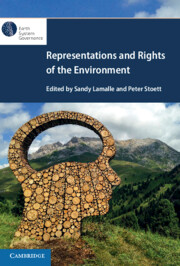Book contents
1 - An Introduction
Towards the Multifold Vision
Published online by Cambridge University Press: 16 March 2023
Summary
This chapter introduces the reflection in the book and the work of the ESG Workgroup on the Representations and Rights of the Environment (ESGRREW), with its intercultural and interdisciplinary process of Research & Dialogue: a critical appraisal of how humankind conceive its relationship with the environment, towards a clear vision of how to apprehend it in law and governance. The reflection takes heed of the change in vision in different fields of knowledge and the message of Indigenous peoples with other critical voices regarding humankind’s present predicament. It champions social and environmental justice, and highlights the crisis of representations and perception of our world. Rekindling the conscience of diversity of languages, cultures and modes of knowing and being, it advocates a wide and relational approach, considering lived experience. It contends that we need to remove ‘barriers to understanding’, create and nurture a common space towards a ‘new common sense’. Reconnecting with other legal traditions will contribute to rethinking legal frameworks and practices for a new legal consciousness.
Keywords
- Type
- Chapter
- Information
- Representations and Rights of the Environment , pp. 1 - 40Publisher: Cambridge University PressPrint publication year: 2023



